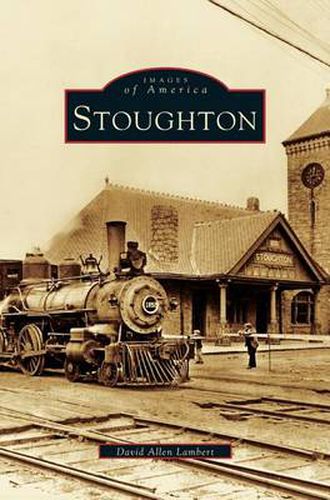Readings Newsletter
Become a Readings Member to make your shopping experience even easier.
Sign in or sign up for free!
You’re not far away from qualifying for FREE standard shipping within Australia
You’ve qualified for FREE standard shipping within Australia
The cart is loading…






This title is printed to order. This book may have been self-published. If so, we cannot guarantee the quality of the content. In the main most books will have gone through the editing process however some may not. We therefore suggest that you be aware of this before ordering this book. If in doubt check either the author or publisher’s details as we are unable to accept any returns unless they are faulty. Please contact us if you have any questions.
Originally, Stoughton was a part of old Dorchester and the land set aside for the Punkapoag Indians. First settled by Colonial families from Dorchester, Braintree, and Dedham, the town has had many generations of descendants who have helped build this thriving community. Stoughton grew with the arrival of various industries, from home shoe shops on family farms and water-powered mills to emerging smokestacks of mammoth shoe and boot factories. At the close of the nineteenth century, both the old Yankee families and recent European immigrants in search of new opportunity called the town of Stoughton home. In Stoughton, many rare photographs from the archives of the Stoughton Historical Society have been carefully selected to illustrate this book. Within these pages, you will see Stoughton’s own namesake, Lt. Gov. William Stoughton, who was the presiding chief justice over most of the Salem witchcraft trials; images from the Great Fire of 1880, which nearly destroyed Stoughton Center; the famous clock-towered granite train station, on Wyman Street; the Stoughton Volunteer Firemen’s Association’s famous hand tub; the majestic Stoughton Town Hall; George E. Belcher’s Shoe Last Factory; and the house of Stoughton’s own victim of the RMS Titanic disaster in 1912.
$9.00 standard shipping within Australia
FREE standard shipping within Australia for orders over $100.00
Express & International shipping calculated at checkout
This title is printed to order. This book may have been self-published. If so, we cannot guarantee the quality of the content. In the main most books will have gone through the editing process however some may not. We therefore suggest that you be aware of this before ordering this book. If in doubt check either the author or publisher’s details as we are unable to accept any returns unless they are faulty. Please contact us if you have any questions.
Originally, Stoughton was a part of old Dorchester and the land set aside for the Punkapoag Indians. First settled by Colonial families from Dorchester, Braintree, and Dedham, the town has had many generations of descendants who have helped build this thriving community. Stoughton grew with the arrival of various industries, from home shoe shops on family farms and water-powered mills to emerging smokestacks of mammoth shoe and boot factories. At the close of the nineteenth century, both the old Yankee families and recent European immigrants in search of new opportunity called the town of Stoughton home. In Stoughton, many rare photographs from the archives of the Stoughton Historical Society have been carefully selected to illustrate this book. Within these pages, you will see Stoughton’s own namesake, Lt. Gov. William Stoughton, who was the presiding chief justice over most of the Salem witchcraft trials; images from the Great Fire of 1880, which nearly destroyed Stoughton Center; the famous clock-towered granite train station, on Wyman Street; the Stoughton Volunteer Firemen’s Association’s famous hand tub; the majestic Stoughton Town Hall; George E. Belcher’s Shoe Last Factory; and the house of Stoughton’s own victim of the RMS Titanic disaster in 1912.